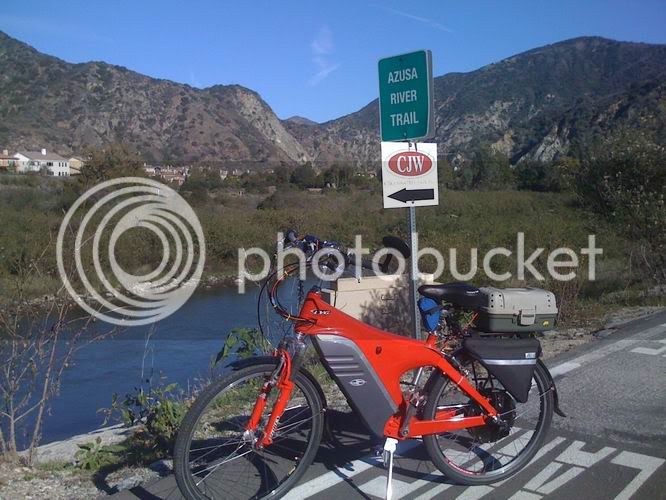Hey Cor....nice to see you too opened your 24v controller. I own five 24V, & five 36V EVG ebikes (one mini folder).
I was curious if a 24v ebike could use the 36v battery box, as they are exactly the same size. Turns out you can, as the first 15 minute ride proved. Though it will "burn" out the 24v controller, but allows the lights & horn to still function, just NO more power to the hub.
When I took my controller apart I found 3 25v capacitors, with one that over heated & was coming apart. So, I figured I'd just go buy some higher voltage ones (60v) @ the local electronics store. I did, installed them, & it still didn't work.
My desire was to of course retain the front/rear lights, cruise control & horn. I lost these when I exchanged the controller on a couple of the 24v ebikes.
For two of the 24v ebikes I bought NOS Tres Terra (bought EVGlobal) Callisto 36v controller/throttle/& brake levers. I too upgraded the battery by using a 5lb 37v (42.5v)/8ah lithium poly battery that fits nicely in the side compartment. Yes, you can over volt the rear 24v/400watt hub up to 44v's (my max) without any issues. The 24v/400watt ebikes don't have the torque of the 36v/500watt hubs but they go right up to 21.5 mph for around 14.5mi range. One 24v ebike was upgraded to a 36v ebike by using the controller/front headlight/throttle/brake handles/500watt rear hub, off a "parts" 36v ebike that has a spun rear gear. Not sure how to repair or if the part is available to purchase. One 24v touring is 100% stock with new 12v/12ah batteries. What a slug @ 11mph.

Now having four (4) dead 24v controllers, it would be nice to know someone that can repair & update these to take 42.5v & then still be able to use the stock front/rear lights, horn & cruise control these ebikes came with.
I'm using the same lithium battery in the 36v ebikes, that too reduces the 22.5lb SLA pack to 5lbs & I'm now going from 17.5mph up to 21.5mph with the voltage increase with a range increase. And I'm still using the original 36v controller that leaves the lights/horn/cruise control intact.
My question, if anyone here on ES knows, is what is the max voltage I can use on an original EVG 36v controller? I desire more speed while retaining the stock goodies!

All the ebike's gearing has been updated to 42t, 44t, or 46t (some trimming) front chaingears, & 7spd 30t-11t rear freewheels for topend pedaling. The 24v ebikes need a complete front chaingear/pedal setup exchange, where as the 36v ebikes will take a 42/44/46t Origin 8 chaingears switch from the stock 38t.
Consider these older EVG ebikes can be bought from $50-$200 complete, it's in my view the best way to get into ebiking for cheap.
This is my $.02 cents input on these EV Global ebikes.
I also have four Tidalforce ebikes, one Tres Terra 36v Europa, & a Ultra Motor 26" 36v Velociti I ride.
 I had to trim the plastic a little for it to clear. Stock chain ring on left for comparison. I even used the original chain, no problem. I got the chain ring off an old mountain bike that someone was throwing way.
I had to trim the plastic a little for it to clear. Stock chain ring on left for comparison. I even used the original chain, no problem. I got the chain ring off an old mountain bike that someone was throwing way. 




